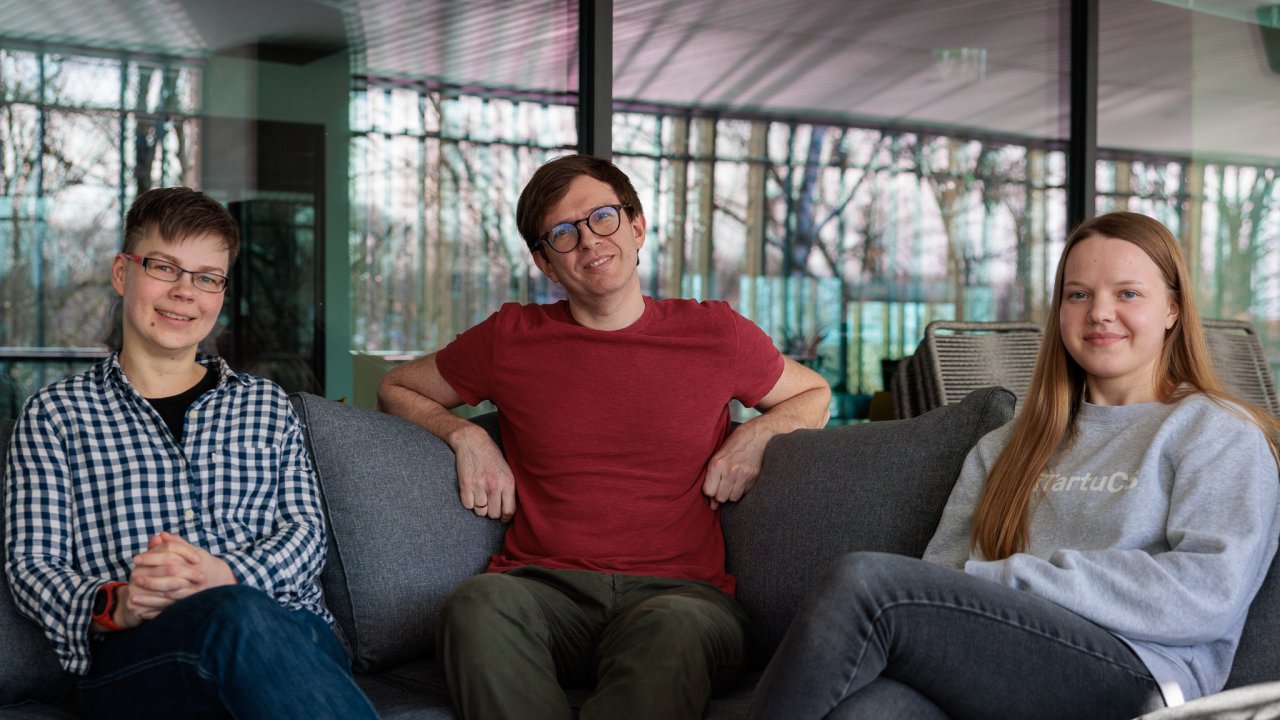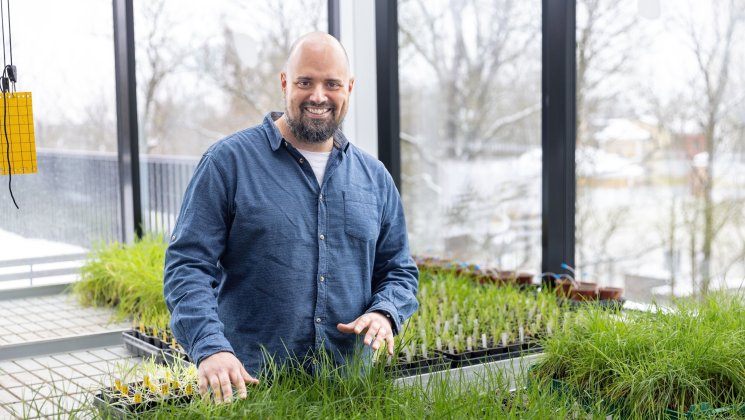-
Faculty of Arts and HumanitiesJakobi 2, r 116-121 51005 Tartu linn, Tartu linn, Tartumaa ESTJakobi 2 51005 Tartu linn, Tartu linn, Tartumaa ESTJakobi 2, IV korrus 51005 Tartu linn, Tartu linn, Tartumaa ESTJakobi 2, III korrus, ruumid 302-337 51005 Tartu linn, Tartu linn, Tartumaa ESTÜlikooli 16 51003 Tartu linn, Tartu linn, Tartumaa ESTLossi 3 51003 Tartu linn, Tartu linn, Tartumaa ESTÜlikooli 18 50090 Tartu linn, Tartu linn, Tartumaa ESTPosti 1 71004 Viljandi linn, Viljandimaa ESTJakobi 2 51005 Tartu linn, Tartu linn, Tartumaa ESTJakobi 2 51005 Tartu linn, Tartu linn, Tartumaa ESTFaculty of Social SciencesLossi 36 51003 Tartu linn, Tartu linn, Tartumaa ESTJakobi 5 51005 Tartu linn, Tartu linn, Tartumaa ESTLossi 36, ruum 301 51003 Tartu linn, Tartu linn, Tartumaa ESTNarva mnt 18 51009 Tartu linn, Tartu linn, Tartumaa ESTNäituse 2 50409 Tartu linn, Tartu linn, Tartumaa ESTNäituse 20 - 324 50409 Tartu linn, Tartu linn, Tartumaa ESTLossi 36 51003 Tartu linn, Tartu linn, Tartumaa ESTRaekoja plats 2 20307 Narva linn, Ida-Virumaa ESTRingi 35 80012 Pärnu linn, Pärnu linn, Pärnumaa ESTLossi 36 51003 Tartu linn, Tartu linn, Tartumaa ESTLossi 36 51003 Tartu linn, Tartu linn, Tartumaa ESTFaculty of MedicineRavila 19 50411 Tartu linn, Tartu linn, Tartumaa ESTBiomeedikum, Ravila 19 50411 Tartu linn, Tartu linn, Tartumaa ESTNooruse 1 50411 Tartu linn, Tartu linn, Tartumaa ESTL. Puusepa 1a 50406 Tartu linn, Tartu linn, Tartumaa ESTL. Puusepa 8 50406 Tartu linn, Tartu linn, Tartumaa ESTRavila 19 50411 Tartu linn, Tartu linn, Tartumaa ESTUjula 4 51008 Tartu linn, Tartu linn, Tartumaa ESTRavila 50411 Tartu linn, Tartu linn, Tartumaa ESTRavila 19 50411 Tartu linn, Tartu linn, Tartumaa ESTFaculty of Science and TechnologyVanemuise 46 - 208 51003 Tartu linn, Tartu linn, Tartumaa ESTNarva mnt 18 51009 Tartu linn, Tartu linn, Tartumaa ESTRiia 23b/2 51010 Tartu linn, Tartu linn, Tartumaa ESTRavila 14a 50411 Tartu linn, Tartu linn, Tartumaa ESTNarva mnt 18 51009 Tartu linn, Tartu linn, Tartumaa ESTRiia 23, 23b - 134 51010 Tartu linn, Tartu linn, Tartumaa ESTObservatooriumi 1 61602 Tõravere alevik, Nõo vald, Tartumaa ESTNooruse 1 50411 Tartu linn, Tartu linn, Tartumaa ESTJ. Liivi tn 2 50409 Tartu linn, Tartu linn, Tartumaa ESTVanemuise 46 51003 Tartu linn, Tartu linn, Tartumaa ESTVanemuise 46 51003 Tartu linn, Tartu linn, Tartumaa ESTArea of Academic SecretaryLossi 3 51003 Tartu linn, Tartu linn, Tartumaa ESTUppsala 6, Lossi 36 51003 Tartu linn, Tartu linn, Tartumaa ESTArea of Head of FinanceÜlikooli 17 51005 Tartu linn, Tartu linn, Tartumaa ESTArea of Director of AdministrationÜlikooli 18A (III korrus) 51005 Tartu linn, Tartu linn, Tartumaa ESTÜlikooli 18, ruumid 102, 104, 209, 210 50090 Tartu linn, Tartu linn, Tartumaa ESTArea of RectorArea of Vice Rector for Academic AffairsUppsala 10 51003 Tartu linn, Tartu linn, Tartumaa ESTÜlikooli 18b 51005 Tartu linn, Tartu linn, Tartumaa ESTArea of Vice Rector for ResearchW. Struve 1 50091 Tartu linn, Tartu linn, Tartumaa ESTArea of Vice Rector for DevelopmentNarva mnt 18 51009 Tartu linn, Tartu linn, Tartumaa ESTVanemuise 46 51003 Tartu linn, Tartu linn, Tartumaa ESTLossi 25 51003 Tartu linn, Tartu linn, Tartumaa EST
The University of Tartu machine translation engine now supports 17 new Finno-Ugric languages

Researchers at the University of Tartu Institute of Computer Science have added Livonian, Komi, Veps and 14 other low-resource Finno-Ugric languages to Neurotõlge, the University’s machine translation engine. Most of these languages are added to a public translation engine for the first time, as they are not part of Google Translate and similar services.
In total, the translation engine supports 23 Finno-Ugric languages: in addition to the more commonly supported Estonian, Finnish and Hungarian, it now includes Livonian, Võro, Proper Karelian, Livvi Karelian, Ludian, Veps, Northern Sami, Southern Sami, Inari Sami, Skolt Sami, Lule Sami, Komi, Komi-Permyak, Udmurt, Hill Mari and Meadow Mari, Erzya, Moksha, Mansi and Khanty.
The research group now invites the speakers and researchers of these languages to contribute corrected translations to improve translation quality. This can be done by editing translations here at translate.ut.ee. Texts like poems, articles, books and others in these languages are also of great help and can be sent to ping@tartunlp.ai.
Lisa Yankovskaya, a Research Fellow in Natural Language Processing at the University of Tartu Institute of Computer Science, explained that feedback is needed to improve the translation quality because many of these languages have extremely scarce resources for creating such translation systems. “This means two things -- first, the translation quality can vary a lot, and it can be especially low when translating into low-resourced languages. Secondly, we need the help of speakers of those languages via contributing correct translations on our platform,” noted Yankovskaya.
“There are several reasons for developing machine translation for low-resource languages. For example, philologists and other interested parties need the translation from these languages to understand texts, folklore, etc., without learning the language. Translating into these languages is a way of preserving endangered languages and supporting the speakers,” said Yankovskaya. She added that this is why our translation system is unrestricted and open to all users, and the software and created models are open-source.
“We started working with Finno-Ugric languages in 2021, with the first system supporting Võro, Northern Sami and Southern Sami,” said Maali Tars, Scientific Programmer at the Institute of Computer Science. According to her, we added Livonian, an extremely endangered language with just about 20 near-native speakers in the same year. In the future, we will continue to improve the quality of the current machine translation system and intend to include more Finno-Ugric languages and dialects.
This collaboration was done with the Livonian Institute at the University of Latvia, Võro Institute, the University of Eastern Finland, Karelian language revitalization programme of the University of Eastern Finland and the Arctic University of Norway.
The work is funded by the National Programme of Estonian Language Technology.
Read more similar news






